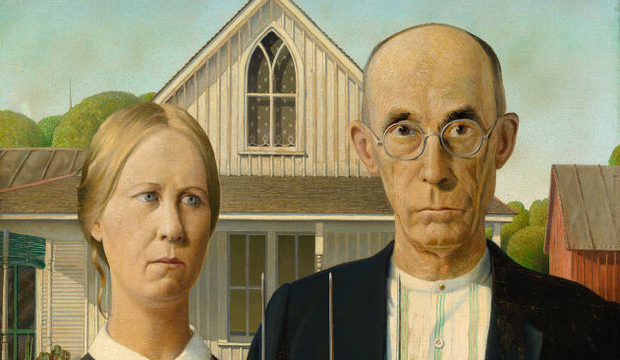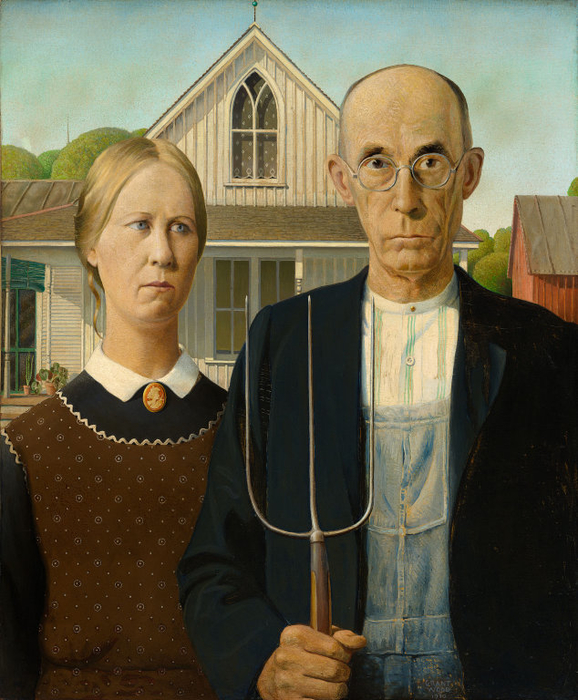Interesting models

American Gothic, Grant Wood’s iconic painting, was made in the 1930s and nowadays is part of the collection of the Art Institute of Chicago.
The artwork was part of the American Regionalism movement which saw artists try to reflect the regions affected by the Great Depression, caused by the Wall Street Crash of 1929.
Wood, while travelling through Iowa, saw the house and got inspired by its European gothic style. The unusual window of the famous American Gothic House (also known as the Dibble House), caught his attention, and he decided to paint it along with ‘the kind of people I fancied should live in that house’ as he said.
The famous painting depicts a farmer standing beside to a younger woman, who is believed to be is wife or daughter. The interesting fact, though, is who the models for the painting were…
Wood wanted his mother, Hattie, to model for his painting. However, as standing for so long would be far too exhausting for her, his sister, Nan Wood Graham, took her place. She wore her mother’s colonial print apron and a pin, mimicking a 19th century Americana. For the male figure, Wood used his 62-year-old dentist, Dr. Byron McKeeby, who is holding a pitchfork.
Another interesting detail about this iconic work, is that the models never actually sat in front of the house. Each element was painted separately.
American Gothic, next year will be coming to Royal Academy of Arts in London, as part of an exhibition on Depression era art. For the first time since its creation the famous painting will be seen outside of North America. Can hardly wait for it...
American Gothic, by Grant Wood
References:
- https://en.wikipedia.org/wiki/American_Gothic_House
- http://totallyhistory.com/american-gothic/
- http://www.bbc.co.uk/news/entertainment-arts-37248237
Text by Melina Avraam
